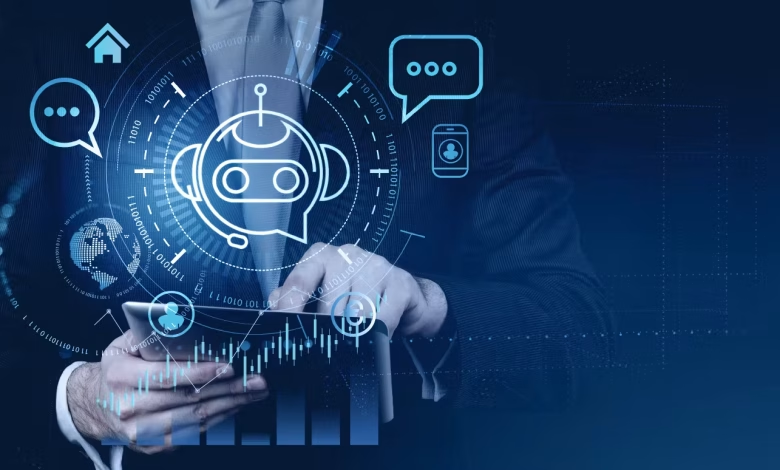
You must have noticed how quickly global communication moves today. Businesses now operate seamlessly across countries and cultures more than ever before. In this fast-moving environment, translation has turned into something much bigger than just converting words from one language to another. It’s now about managing entire workflows and maintaining brand tone.
That’s where technology has intervened. Automation, cloud-based technologies, and machine learning have taken translation to the digital space, and at the heart of it all is the translation management system. But with artificial intelligence becoming increasingly sophisticated, a question begins to appear everywhere: Will these AI systems totally replace old-fashioned translation agencies?
Understanding What AI-Fueled TMS Platforms Really Do
Imagine a TMS as the headquarters of a translation project. It brings translators, editors, reviewers, and clients together in one common platform. Rather than dealing with emails and attachments, everything is done in one platform.
With the addition of AI, this system becomes even smarter. It suggests translations, detects errors, and learns from previous projects. AI can recognize patterns in language, adapt to brand tone, and even predict what kind of translation style suits a particular client.
It’s not merely about speed. AI-based TMS systems have the capability to cut down on repetitive work for translators, maintain standard terminology, and organize large projects.
How These Platforms Are Changing the Translation Process
Previously, translation agencies relied very much on human coordination. There was a project manager who would delegate work, do quality checks, and ensure everything was on time.
Today, AI tools can read files, identify translators by skill level, and even proofread for grammar and terminology before humans get involved. For global businesses working with thousands of documents a month, that’s a huge advantage.
Rather than spending hours on paperwork, project managers can now devote their time to creative decision-making, such as bringing content to new markets or toning down the language of marketing copy. AI handles routine tasks, and humans bring meaning and context.
Talking About the Human Touch?
Here’s the thing: translation isn’t just accuracy; it’s empathy and comprehension. A computer understands the definition of every word, but it has no sense of humor, emotion, or culture like humans do.
A language translation company instills that human touch that machines are incapable of. If a brand is entering a new market, it requires cultural understanding, tone, and narrative. That’s what human translators provide.
The True Edge: Harmony Between Humans and AI
Rather than seeing AI as competition, most translation professionals now view AI as a partner. When used intelligently, AI-driven TMS tools can make human translators more proficient at what they do.
AI can do the initial draft of the translation, particularly for repetitive or technical texts. Human linguists then polish it, introducing emotion, context, and precision. This blended model saves time without sacrificing quality.
AI also facilitates the translators’ learning more quickly. By having access to term databases and translation memories, the translators can instantly observe how the similar content was previously handled.
This partnership marks a way for agencies and freelancers to produce work faster and with fewer errors, and that’s what clients want.
Why Traditional Agencies Are Adapting Instead of Disappearing
It’s easy to assume that automation will replace everything, but translation tells a different story. Many traditional agencies are already integrating AI into their systems.
These agencies utilize AI tools today to oversee big projects, estimate costs, and monitor performance. But they still depend on human intelligence when it comes to editing, review, and cultural translation.
The agencies thriving today don’t fear technology. They are leveraging it in order to serve clients more quickly, offer competitive rates, and uphold a global level of quality.
What Businesses Actually Need from Translation These Days
Foreign trade companies have one large worry: consistency. It could be a legal agreement, a marketing effort, or an instruction manual.
AI technology ensures consistency through monitoring the tone, terms, and company voice across all texts. Human translators ensure each message sounds appropriate in the local culture.
This combination of machine learning and human editing is what the world’s businesses are seeking. It’s not a matter of replacing one for the other; it’s about combining speed and meaning.
The New Role of Translation Agencies in an AI-Driven World
So where are agencies headed? Instead of merely translating text, they now deliver cultural adaptation, voice consistency, and content strategy. Some agencies even provide training for clients’ internal teams, educating them on how to effectively use AI tools. They are not working on translating alone; they are molding global communication. In doing this, AI has actually expanded what translation agencies are capable of doing.
Role of AI in Quality Assurance
AI has also accelerated and improved quality checks. Rather than reading through each line manually, AI systems can automatically alert potential problems such as mistranslations or out-of-flow phrases. They can even detect tone mismatching, such as if a passage set to be friendly-sounding gets overly formal all of a sudden.
This doesn’t eliminate the need for human reviewers. Instead, it gives them a better starting point. Reviewers can now focus on polishing the finer details instead of hunting for small errors. That saves time and improves the overall quality of the final content.
And because these systems learn with each project, they improve with time. The larger the amounts of data they process, the more adept they become at guessing what an ideal translation should resemble.
Why Human Translators Remain the Best
Ultimately, language is too human. No AI, no matter how sophisticated, can ever reproduce tone, humor, and narrative. Human translators get context; they know when to make a sentence sound soft, assertive, or convincing. They can tailor a brand’s voice in ways that algorithms simply can’t. And in sensitive sectors such as healthcare, law, or marketing, that emotional intelligence can be the game-changer.
A Mix of Technology and Trust
If you examine it closely, it’s obvious that AI platforms and translation agencies are converging on the same end: transparent, precise, and significant communication. Technology presents speed and accuracy, and humans introduce warmth and depth. The future is about blending the two into something more relatable.
Companies that realize this equilibrium are the ones out front. They realize that translation is not a matter of words; it’s a matter of connection. And connection will forever require a human element. As multinational businesses search for dependable corporate solutions, some continue to rely on translation companies that understand how to blend technology and intellect.
Conclusion
AI-based TMS platforms are certainly revolutionizing translation. They are quicker, more streamlined, and astonishingly smart. But replacing conventional agencies? Not yet. Rather, they are transforming the business into something more collaborative and dynamic.






